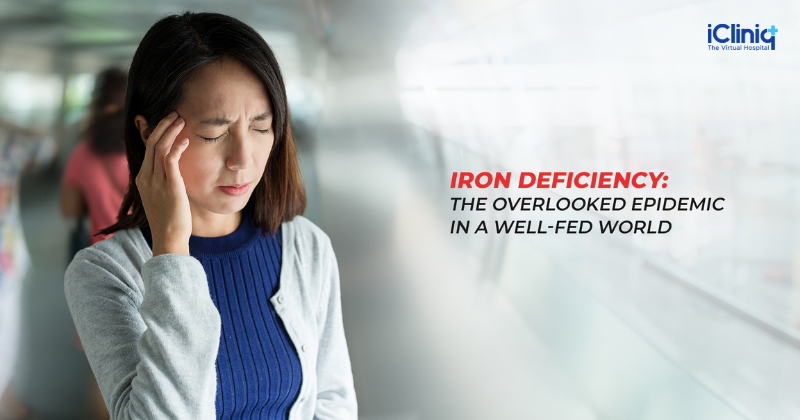Iron Deficiency: The Overlooked Epidemic in a Well-Fed World

It is simple to ignore the small cues our bodies provide us amid the busy pace of modern life. Pale skin, fatigue, and vertigo are common symptoms that are written off due to stress or a hectic schedule. However, they could be the subdued murmurs of an unseen robber: iron deficiency. Iron insufficiency is one of the most prevalent nutritional deficiencies in the world, although it is strangely underdiagnosed and undervalued. Let us examine the irony of iron deficiency, including its causes, effects, and remedies to help us feel more vibrant.
1. Iron: The Health Sector's Silent Hero
Iron is an essential component of human biology. It is essential for synthesizing hemoglobin, the red blood cell protein that carries oxygen from our lungs to the rest of our body. When we do not get enough iron, our cells struggle to get the oxygen they require, which can cause several health problems.
2. The Stealthy Symptoms of Iron Deficiency
The mild but substantial signs of iron deficiency include migraines, dizziness, headaches, weakness, and pale skin. Deficiency may also be indicated by specific symptoms like brittle nails, swelling tongue, or peculiar desires for non-nutritive items. Known as the "silent thief," iron deficiency can lead to severe disorders such as anemia if left untreated.
3. Vulnerable Groups: Who Suffers the Most
Although iron deficiency can harm everybody, some groups are more susceptible than others. Menstrual blood loss puts women, especially those who are of childbearing age, at increased risk. In addition, pregnant women require more blood volume and iron to support the development of a fetus. Other at-risk categories include newborns and early children, whose fast growth needs a greater iron intake, and teenagers, especially girls. Because plant-based iron, or non-heme iron, is not absorbed as well as iron present in meat, vegetarians and vegans may also be at higher risk.
4. Iron Deficit in Developed Countries: An Ironic Conundrum
Ironically, iron deficiency still exists in developed countries with plenty of food. There are various reasons for this conundrum. Processed meals that are deficient in essential nutrients are a common feature of modern diets. Nutritional decisions might unintentionally result in insufficient consumption of iron, even in those who are health-conscious. For instance, even though spinach has a high iron content, it also includes oxalates, which prevent iron absorption. Similarly, because of their polyphenol concentration, coffee and tea can hinder iron absorption when eaten with meals.
5. Diagnosing and Defeating the Silent Thief
Assess symptoms and food, then confirm with blood tests measuring ferritin, hemoglobin, and other iron indicators to identify iron deficiency. Dietary changes are part of the treatment, including adding foods high in iron and sources of vitamin C for improved absorption. In severe situations, intravenous treatment or iron supplements may be necessary.
6. Prevention: The Ultimate Defense
A balanced diet incorporating heme and non-heme iron sources prevents iron insufficiency. Meal planning is also essential to maximize iron absorption for people with greater iron demands or dietary limitations. Blood tests and routine examinations can also monitor iron levels, particularly in more vulnerable individuals.
Although iron deficiency goes undiagnosed, it can be prevented with knowledge and preventive steps. We can make sure we are getting enough iron in our diets and paying attention to our bodies to maintain good health. If you are feeling lethargic or have mild symptoms, it could be a sign of iron deficiency, so take steps to regain your energy.





